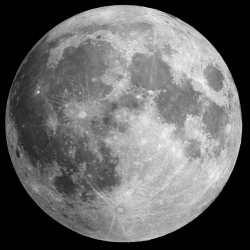
The Earth’s magnetic field protects us from radiation. This shield is produced by the geodynamo, the rapid motion of huge quantities of liquid iron alloy in the Earth’s outer core. To maintain this magnetic field the classical model required the Earth’s core to have cooled by around 3,000° C over the past 4.3 billion years.
Now, a team of researchers suggests that, on the contrary, its temperature has fallen by only 300° C. The action of the moon, overlooked until now, is thought to have compensated for this difference and kept the geodynamo active. Their work is published on 30 march 2016 in the journal Earth and Planetary Science Letters.
The classical model of the formation of Earth’s magnetic field raised a major paradox. For the geodynamo to work, the Earth would have had to be totally molten four billion years ago, and its core would have had to slowly cool from around 6800° C at that time to 3800° C today.
However, recent modeling of the early evolution of the internal temperature of the planet, together with geochemical studies of the composition of the oldest carbonatites and basalts, do not support such cooling. With such high temperatures being ruled out, the researchers propose another source of energy in their study.
The Earth has a slightly flattened shape and rotates about an inclined axis that wobbles around the poles. Its mantle deforms elastically due to tidal effects caused by the moon. The researchers show that this effect could continuously stimulate the motion of the liquid iron alloy making up the outer core, and in return generate Earth’s magnetic field.
The Earth continuously receives 3700 billion watts of power through the transfer of the gravitational and rotational energy of the Earth-moon-sun system, and over 1,000 billion watts is thought to be available to bring about this type of motion in the outer core. This energy is enough to generate the Earth’s magnetic field, which together with the moon, resolves the major paradox in the classical theory. The effect of gravitational forces on a planet’s magnetic field has already been well documented for two of Jupiter’s moons, Io and Europa, and for a number of exoplanets.
Since neither the Earth’s rotation around its axis, nor the direction of its axis, nor the moon’s orbit are perfectly regular, their combined effect on motion in the core is unstable and can cause fluctuations in the geodynamo. This process could account for certain heat pulses in the outer core and at its boundary with the Earth’s mantle.
Over the course of time, this may have led to peaks in deep mantle melting and possibly to major volcanic events at the Earth’s surface. This new model shows that the moon’s effect on the Earth goes well beyond merely causing tides.
